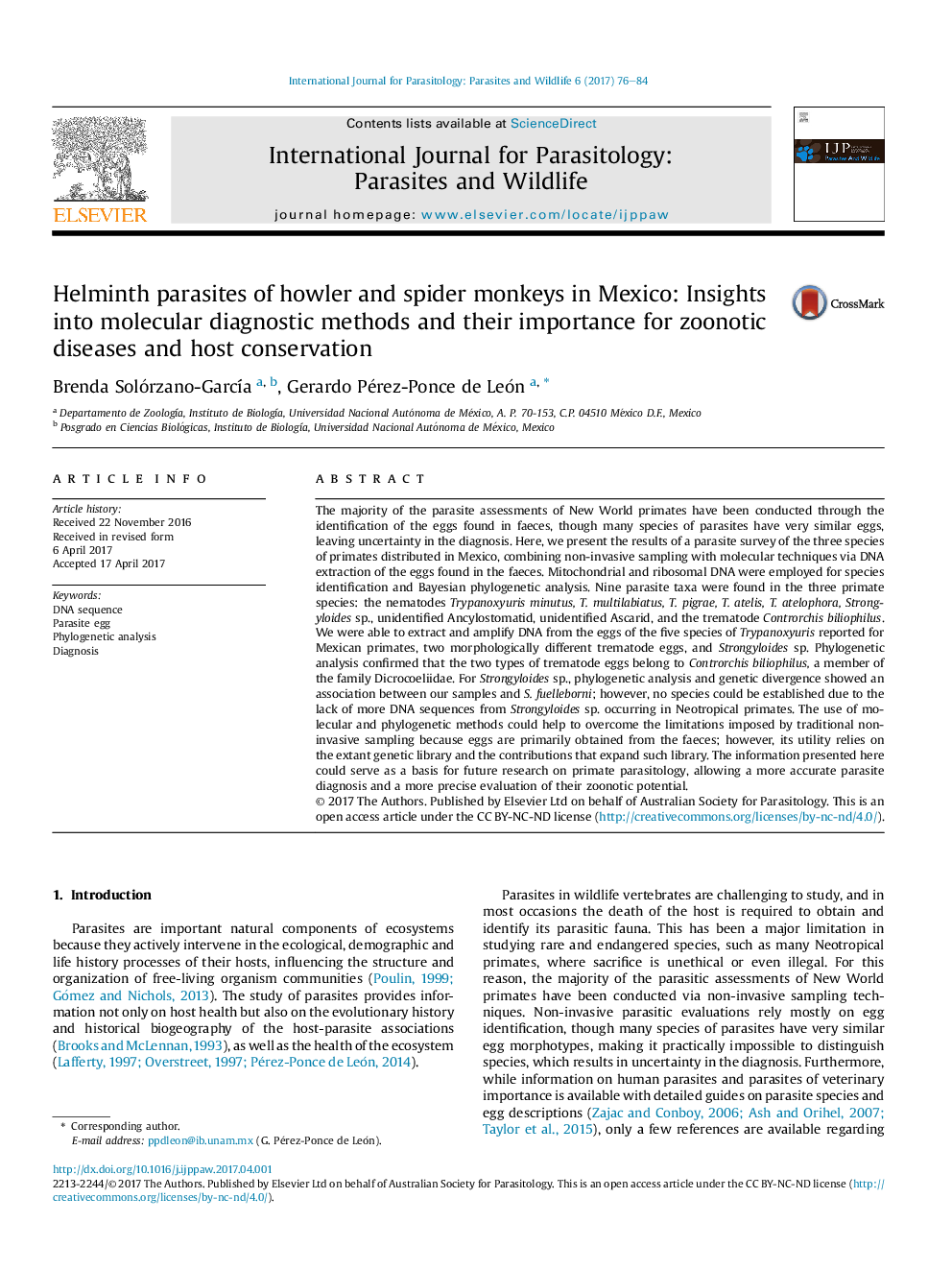| کد مقاله | کد نشریه | سال انتشار | مقاله انگلیسی | نسخه تمام متن |
|---|---|---|---|---|
| 5517925 | 1401040 | 2017 | 9 صفحه PDF | دانلود رایگان |

- Molecular diagnosis of parasites from Mexican primates through non-invasive sampling.
- Phylogenetic analysis identified seven parasite species.
- 28S a suitable marker for parasite DNA diagnosis.
- Accurate parasite diagnosis crucial in wildlife conservation and management programs.
The majority of the parasite assessments of New World primates have been conducted through the identification of the eggs found in faeces, though many species of parasites have very similar eggs, leaving uncertainty in the diagnosis. Here, we present the results of a parasite survey of the three species of primates distributed in Mexico, combining non-invasive sampling with molecular techniques via DNA extraction of the eggs found in the faeces. Mitochondrial and ribosomal DNA were employed for species identification and Bayesian phylogenetic analysis. Nine parasite taxa were found in the three primate species: the nematodes Trypanoxyuris minutus, T. multilabiatus, T. pigrae, T. atelis, T. atelophora, Strongyloides sp., unidentified Ancylostomatid, unidentified Ascarid, and the trematode Controrchis biliophilus. We were able to extract and amplify DNA from the eggs of the five species of Trypanoxyuris reported for Mexican primates, two morphologically different trematode eggs, and Strongyloides sp. Phylogenetic analysis confirmed that the two types of trematode eggs belong to Controrchis biliophilus, a member of the family Dicrocoeliidae. For Strongyloides sp., phylogenetic analysis and genetic divergence showed an association between our samples and S. fuelleborni; however, no species could be established due to the lack of more DNA sequences from Strongyloides sp. occurring in Neotropical primates. The use of molecular and phylogenetic methods could help to overcome the limitations imposed by traditional non-invasive sampling because eggs are primarily obtained from the faeces; however, its utility relies on the extant genetic library and the contributions that expand such library. The information presented here could serve as a basis for future research on primate parasitology, allowing a more accurate parasite diagnosis and a more precise evaluation of their zoonotic potential.
316
Journal: International Journal for Parasitology: Parasites and Wildlife - Volume 6, Issue 2, August 2017, Pages 76-84